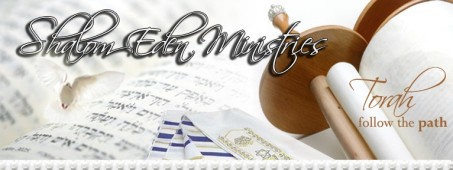 |
SERIES F --- WILDERNESS WANDERINGS |
BIBLE STUDY LESSON 08
FESTIVAL OFFERINGS THE FEAST OF TRUMPETS AND THE DAY OF ATONEMENT
On the fifteenth day of the seventh month you shall bring the people together again in a holy convocation. This shall be the beginning of a seven-day feast before the Lord. No hard work shall be done on the fifteenth day. On that day you shall present to the Lord a burnt offering of thirteen young bulls, two rams and fourteen male lambs a year old, all without blemish. With these animals you shall present the grain offering of finely ground flour mixed with olive oil; nine quarts with each young bull, six quarts with each ram and three quarts with each lamb. You also must offer a male goat as a sin offering. These shall be offered in addition to the daily burnt offering with its grain and drink offering. On the second day of the feast, the offering shall be twelve young bulls, two rams and fourteen male lambs a year old, all without blemish, presented with the same amount of grain and drink offerings. A male goat also shall be offered as a sin offering, as well as the usual daily offerings. On the third day of the feast, the offering shall be eleven young bulls, two rams and fourteen male lambs a year old, all without blemish, presented with the same amount of grain and drink offerings. A male goat also shall be offered as a sin offering, as well as the usual daily offerings. On the fourth day of the feast, the offering shall be ten young bulls, two rams and fourteen male lambs a year old, all without blemish, presented with the same amount of grain and drink offerings. A male goat also shall be offered as a sin offering, as well as the usual daily offerings. On the fifth day of the feast, the offering shall be nine young bulls, two rams and fourteen male lambs a year old, all without blemish, presented with the same amount of grain and drink offerings. A male goat also shall be offered as a sin offering, as well as the usual daily offerings. On the sixth day of the feast, the offering shall be eight young bulls, two rams and fourteen male lambs a year old, all without blemish, presented with the same amount of grain and drink offerings. A male goat also shall be offered as a sin offering, as well as the usual daily offerings. On the seventh day of the feast, the offering shall be seven young bulls, two rams and fourteen male lambs a year old, all without blemish, presented with the same amount of grain and drink offerings. A male goat also shall be offered as a sin offering, as well as the usual daily offerings. On the eighth day of the feast, gather the people again in a holy convocation and do no hard work on that day. Offer a burnt offering of one young bull, one ram and seven male lambs a year old, all without blemish. A male goat also shall be offered as a sin offering, as well as the usual daily offerings. These offerings must be given with your annual feasts, in addition to other offerings for vows, freewill offerings, burnt offerings, grain offerings, drink offerings or peace offerings. When the Lord had finished giving Moses these instructions, Moses repeated them to all the people.” COMMENTS LIFE THEY LEFT BEHIND: COSMETICS IN ANCIENT EGYPT TEST YOURSELF 1.) In what month did the feast of the trumpets happen? 2.) What month was the Day of Atonement in? 3.) What did Egyptian women use to bleach and clean their skin? 4.) Where did women in ancient times obtain green and blue pigments? 5.) What did Egyptian women use to stain the palms of their hands and the soles of their feet?
|